“Knitting shouldn’t feel like a tug-of-war, and your needle isn’t meant to be a battering ram!” If you’ve ever muttered this sentiment to yourself as you wrestled with your stitches, this guide is for you, my friend!
Welcome to the world of the tight knitter, where inserting a needle into a stitch can sometimes feel like threading a camel through the eye of a needle. If this sounds all too familiar, rest assured you’re not alone. But more importantly, you’ve come to the right place.
I have a confession to make: I’m a tight knitter. It was a struggle when I was first learning how to knit, and it certainly made my knitting education more of a challenge. I still sometimes have to remind myself to watch out for my tight stitches. And believe me; my hands will surely let me know if I’ve been knitting too tightly!
Many of us have been there. The needles are like wrestling sticks, the yarn seems to be playing defense, and the tension in your project resembles a high-stakes game of tug of war. But don’t worry – if your stitches are tighter than a locked door, there’s a key to loosen them up. Ready to wave goodbye to strained hands, uneven stitches, and stubbornly immovable projects?
What is Tension?
In the world of knitting, ‘tension’ refers to the tightness or looseness of your stitches; it’s a critical knitting definition to know. It’s the balance between the yarn, your needles, and your hands. A perfect stitch is not too tight and not too loose – it’s just right.
You may think of tension as the ‘Goldilocks principle’ of knitting: not too hot, not too cold, but just right. In knitting terms, this means your stitches should slide easily along your needles but not slip off entirely.
Tension is essential because it directly impacts your knitted piece’s appearance, drape, and size. If your tension is too tight, your fabric may curl or become distorted, and you may find your hand cramping after a short period of knitting. On the other hand, if your tension is too loose, your fabric might look sloppy, and the resulting project may not hold its shape well.
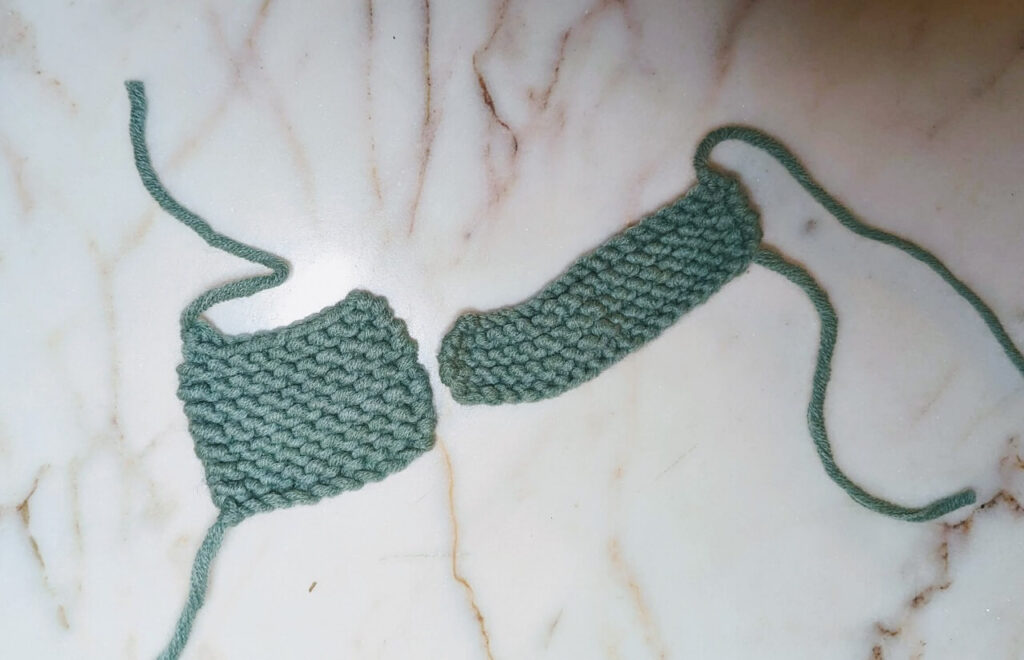
That’s why understanding and controlling your tension is a critical skill for any knitter, especially for those of us in the tight knitter’s club. Learning to manage your tension effectively can lead to more enjoyable knitting, healthier hands, and, most importantly, beautifully finished projects.
Checking Your Tension
One of the first things you can do is assess your tension. This is where gauge swatches come in handy.
A gauge swatch is a small (usually 4×4 inch) square of knitting that allows you to assess your stitch and row gauge. If you’re following a pattern, the designer usually provides a recommended gauge to ensure your final product matches the intended size and appearance. This should be one of the first steps a knitter learns when understanding how to read a knitting pattern.
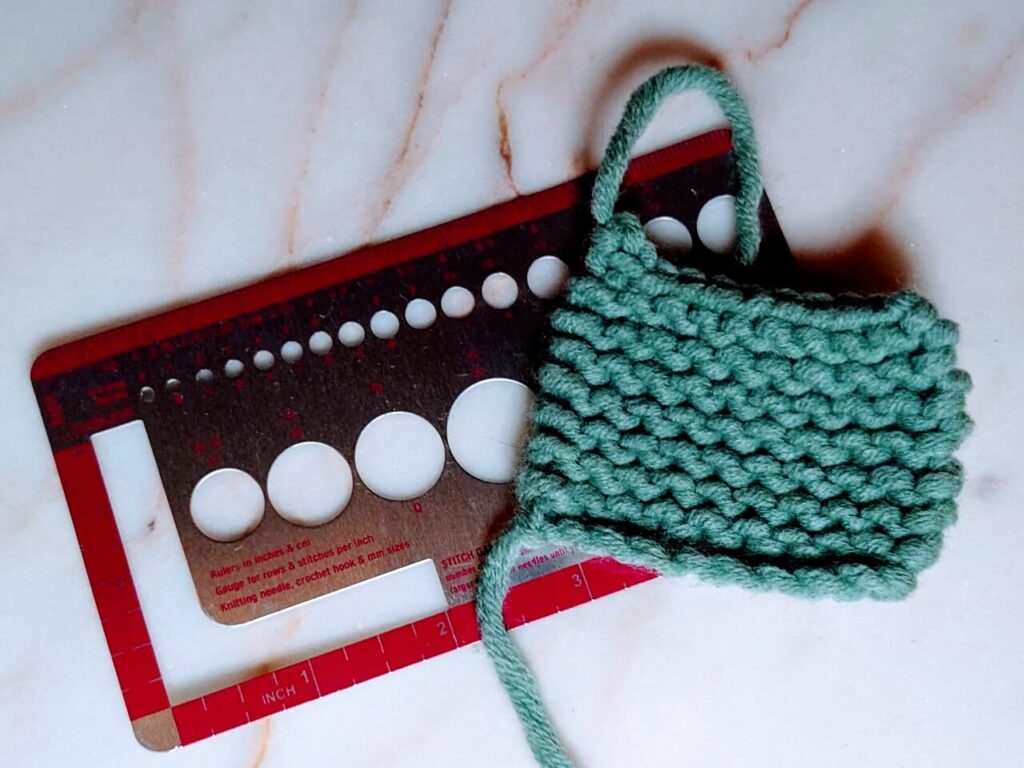
If your gauge swatch is smaller or your stitches are tighter than recommended, you’re a tight knitter! But don’t worry; there are several steps you can take to loosen up your stitches and make your knitting experience more enjoyable.
Why Tight Knitting Happens: Unraveling the Reasons
Before we dive into the solutions, let’s first understand why this happens. Understanding the ‘why’ can help address the ‘how to fix it.’ The culprits behind our stranglehold stitches are usually rooted in habits and technique. So, let’s look at the common factors that turn us into tight knitters.
Habit or Nature?
Firstly, some of us are naturally tighter knitters due to our innate style and the level of control we like to exert over tasks. It’s not just about knitting; you might also notice this tendency in other handiwork or crafts.
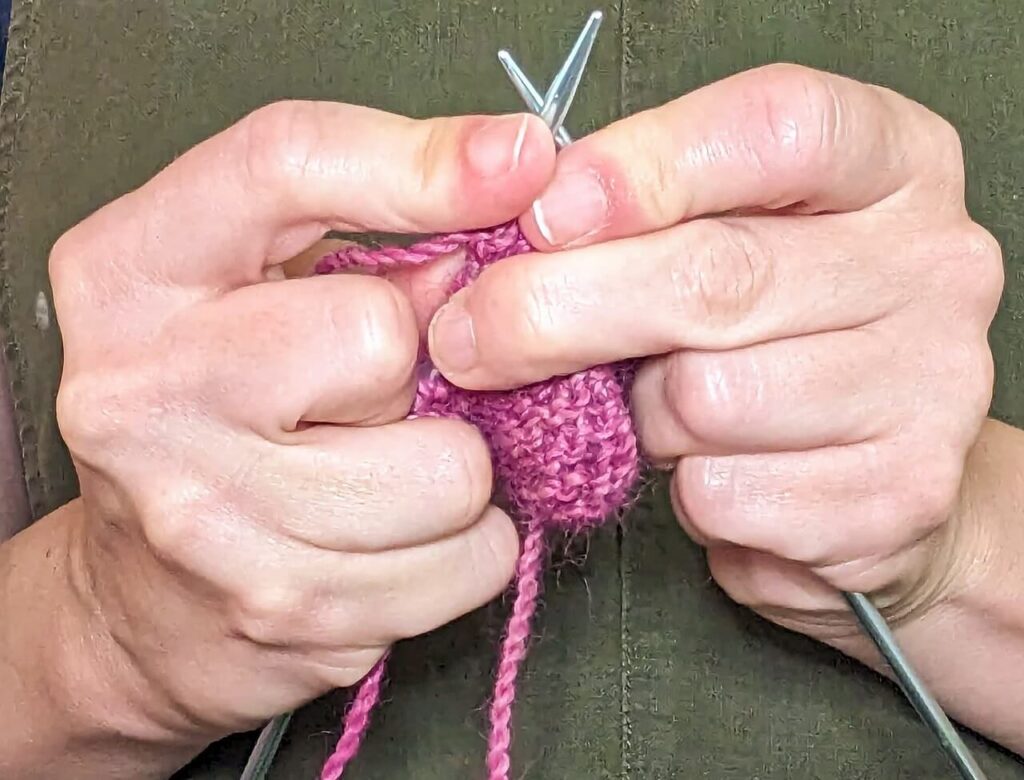
Some knitters adopt a tighter technique when they first learn to knit. They might believe this approach creates a neater, more even result or offers better control of the yarn and needles. Unfortunately, this belief often stems from a misconception that a firm grip equals precision and quality, which is not necessarily true in knitting.
The Stress Factor
Another common factor is stress. Knitting is often seen as a calming, meditative activity. However, if we’re feeling stressed or anxious, this tension can translate to our hands and, subsequently, our knitting. The result? You’ve guessed it – tighter stitches!
Think about what your body instinctively does when you’re feeling tense: your shoulders hunch up around your ears, your jaw clenches, and you may even hold your breath. All of this is directly transmitted to your knitting. Don’t let your stress counteract the many benefits of knitting!
Fear of Loose Ends
There’s also the fear factor. As tight knitters, we may fear that loose stitches will lead to our project unraveling or not holding its shape. This can lead us to overcompensate by knitting tighter stitches to ensure everything holds together. Unfortunately, this often has the opposite effect, leading to distorted fabrics and a less enjoyable knitting process.
Technique and Tools
Lastly, the way we hold our yarn and needles, the size and type of needles we use, and our knitting techniques can all contribute to tighter knitting.
Certain knitting styles inherently produce tighter stitches. For example, if you’re an English-style knitter (also known as “throwing”), you might find that your knitting tends to be tighter due to the action of wrapping the yarn around the needle. Different cast on methods may also influence how tight your stitches end up.
Tips for the Tight Knitter: How to Fix Tight Knitting
Recognizing these factors in our knitting can help us understand why we’re knitting tightly and, more importantly, how we can adjust our techniques to become more comfortable and loose knitters.
So let’s keep going and discover ways to bid farewell to those pesky tight stitches with these knitting tips!
Relax Your Hold
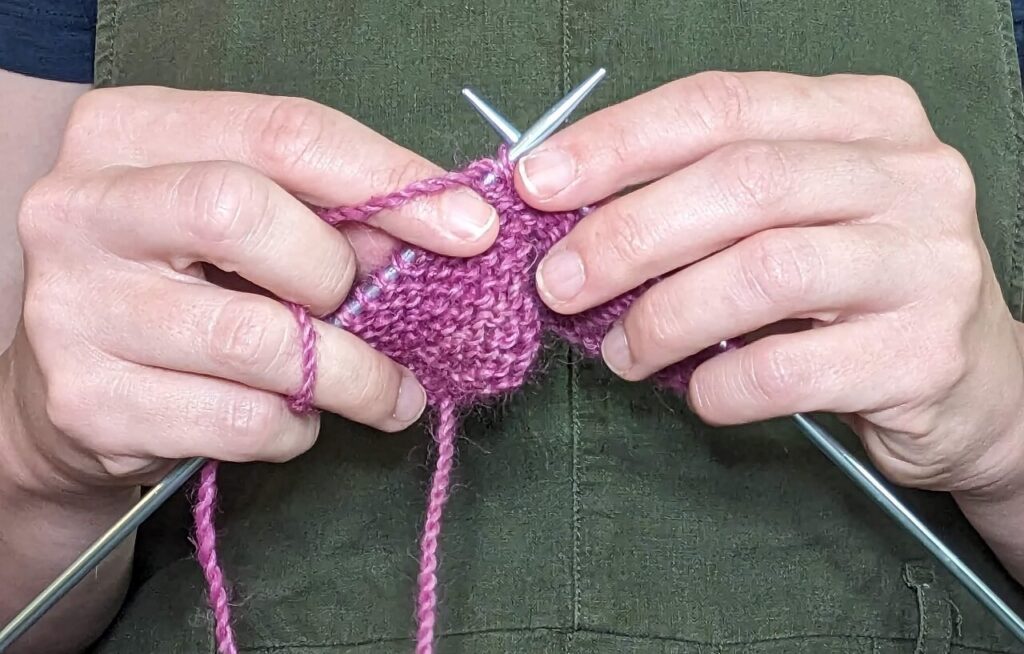
Call me Captain Obvious, but consciously focusing on relaxing your hands while you knit can make a huge difference. Try to loosen your grip on both the needles and the yarn. Your hold should be firm enough to maintain control but relaxed enough to allow the needles to move freely.
Needle Material and Size
Tight knitters may find that using different needle materials can help ease tension. Metal and plastic needles, for example, have more slip and can encourage stitches to move more freely.
On the other hand, bamboo needles grip your yarn well, meaning less slippage. This small change may make you feel more secure in your yarn work, confident that your stitches won’t fall off. This way, you won’t feel like you need to work so hard to keep them in place.
That’s why I often recommend bamboo as the best beginner knitting needles.
You could also consider going up a needle size to create looser stitches, but remember to check your gauge to ensure it matches with your pattern.
Don’t Just Tip-Toe: Embrace the Whole Needle!
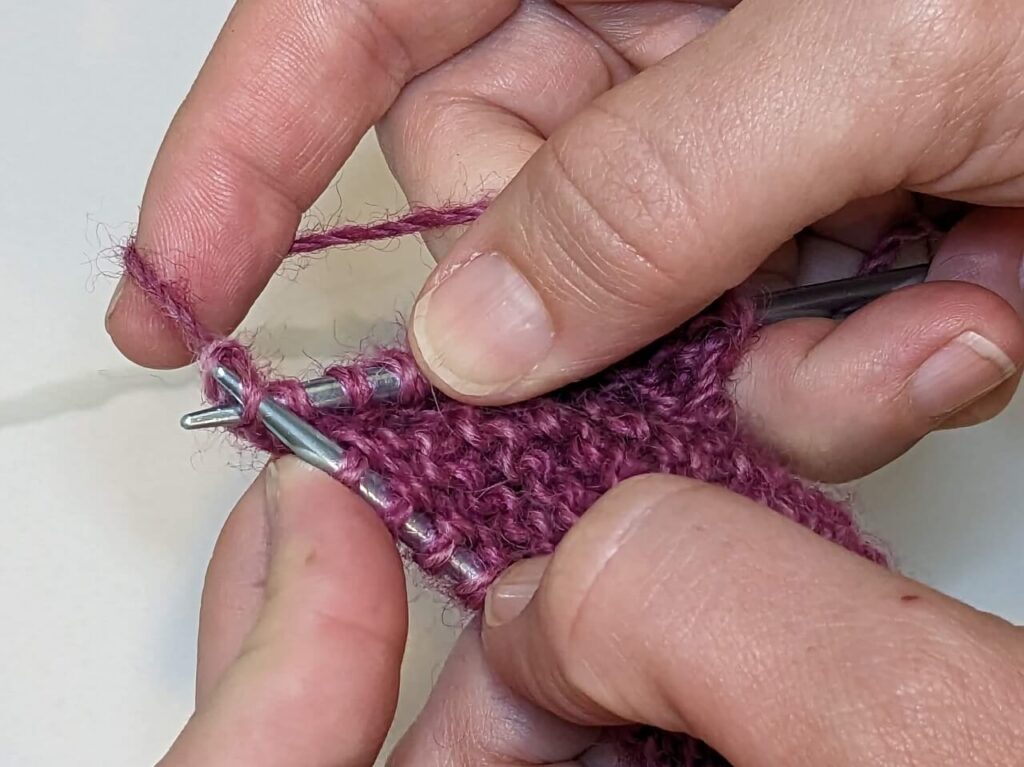
A common habit we tight knitters have is working too close to the tips of our needles. It feels safer, right? There’s less risk of dropping a stitch. However, this is a sneaky culprit for overly tight stitches. When we knit on the tips, we often end up pulling the yarn too tight, resulting in too small stitches.
Instead of knitting just on the tips, make friends with the whole needle! As you knit, try to push your stitches down onto the broader part of the needle – the shaft – before creating the next stitch. This allows the stitch to form at the correct size according to your needle diameter, preventing the stitches from becoming too snug.
Rethinking Your Yarn Positioning: From Throwing to Picking
Our knitting style and how we hold our yarn plays a significant role in determining our tension. Tension issues can be pretty common for those of us used to “throwing” our yarn in the English knitting style. This style involves wrapping the working yarn around the needle, sometimes resulting in tight stitches.
It may be worth exploring a technique that involves “picking” the working yarn with your needle instead. Some tight knitters find that holding their yarn in their left hand (known as Continental style knitting) helps them control their tension better.
“Picking” the yarn, as practiced in the Continental style, often allows for more even tension. In this method, your secondary hand holds the working yarn while your primary hand, with the working needle, “picks” or scoops up the yarn to create each stitch. This way, you can maintain consistent tension with the help of your non-dominant hand.
To our seasoned knitters, changing knitting styles might feel a bit like learning to write with your non-dominant hand. It’s undoubtedly more challenging, but remember, it’s entirely possible with a bit of practice. After all, as the old saying goes, “A smooth sea never made a skilled sailor.” Embrace the challenge!
Needle Positioning: The Art of Spacing
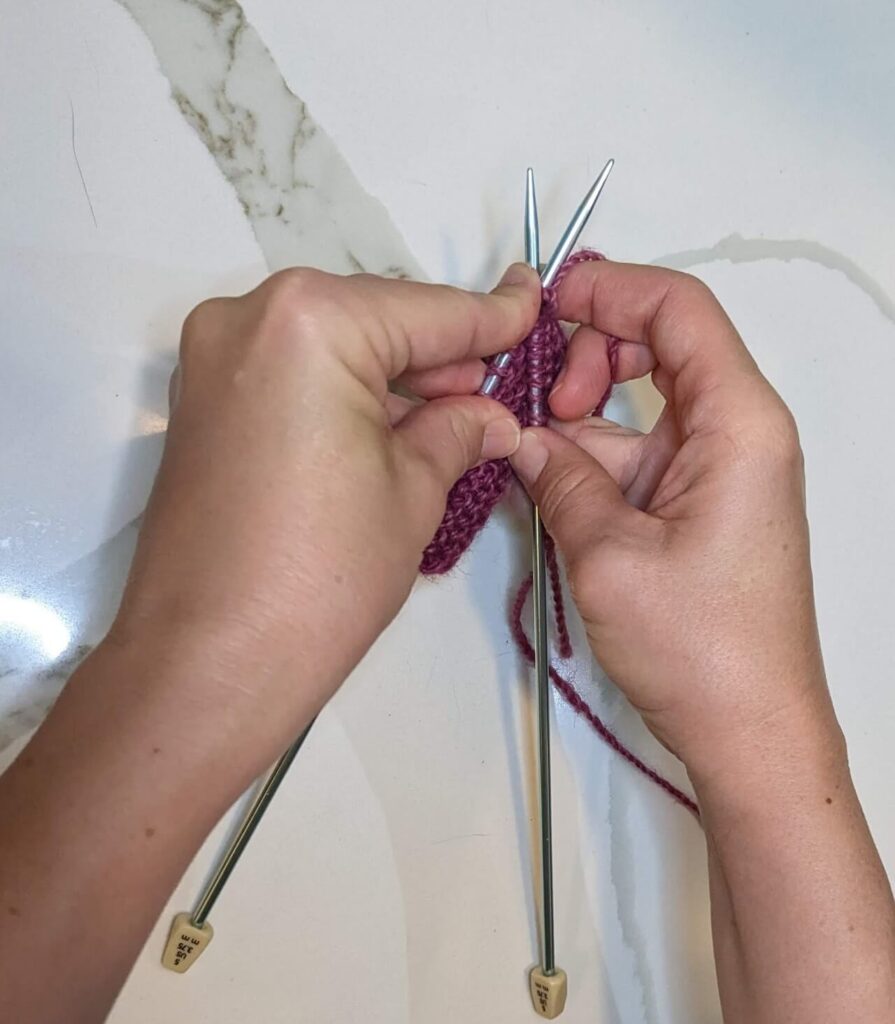
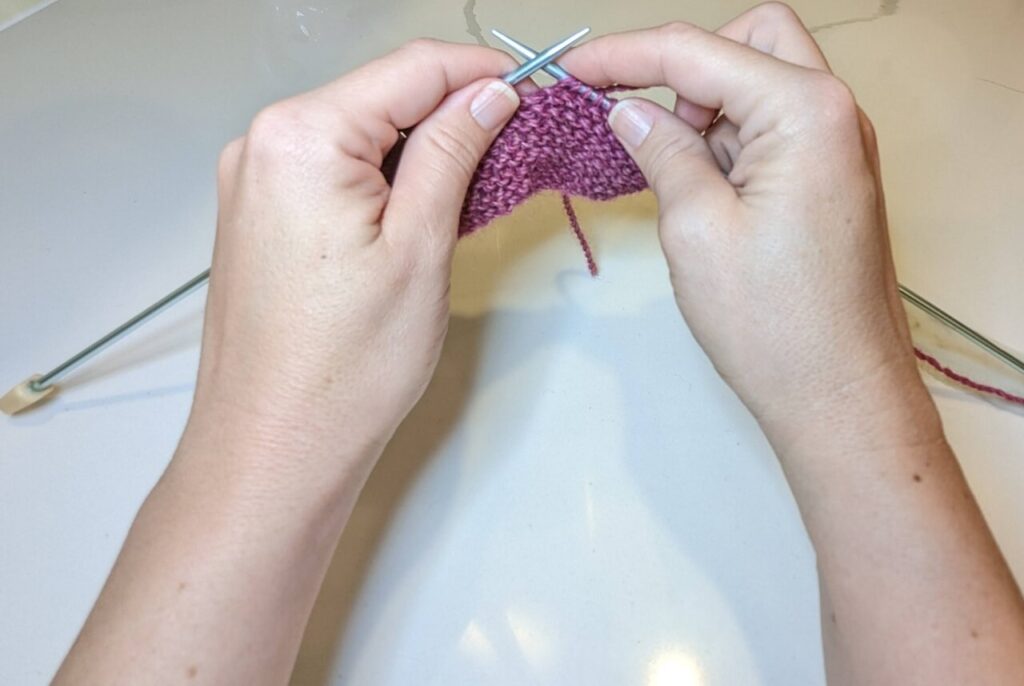
A vital yet often overlooked aspect of knitting comfortably is the positioning of our needles. How we hold our needles and the angle at which they interact can greatly influence the tension in our knitting.
As tight knitters, we tend to hold our needles close together, almost parallel. This can make it challenging to maneuver the yarn and create new stitches, often resulting in smaller, tighter stitches as we struggle to maintain control.
The solution? Give your needles some breathing room! Holding your needles wider apart and creating almost an obtuse angle allows more room for the yarn to wrap around the needle and form a stitch, thus creating looser stitches. This adjustment may feel strange initially, but with practice, it can lead to a more fluid knitting motion, better tension control, and, most importantly, relief from those tight stitches.
Cut Your Yarn Some Slack
As a tight knitter, have you ever noticed how you pull your yarn while knitting? Do you tend to yank it tight, winding it tightly around your fingers and keeping it taut as you work? If so, you might unconsciously add to the tension in your stitches.
Pulling your yarn too tightly from the ball leaves little to no slack in the yarn between the stitches. This lack of slack can contribute to smaller, tighter stitches because the yarn doesn’t have room to move freely as you knit.
To address this issue, try to consciously create some slack in your yarn pull. As you pick up the yarn to make a new stitch, allow extra yarn to flow from the ball to your needle. This creates a small buffer of yarn, giving it the freedom to form a larger, looser stitch. If your yarn is packed tightly in the skein and pulling it is a chore, making a new, loose ball of yarn may be worth the time. Loosely wound yarn is the best type of yarn to work with.
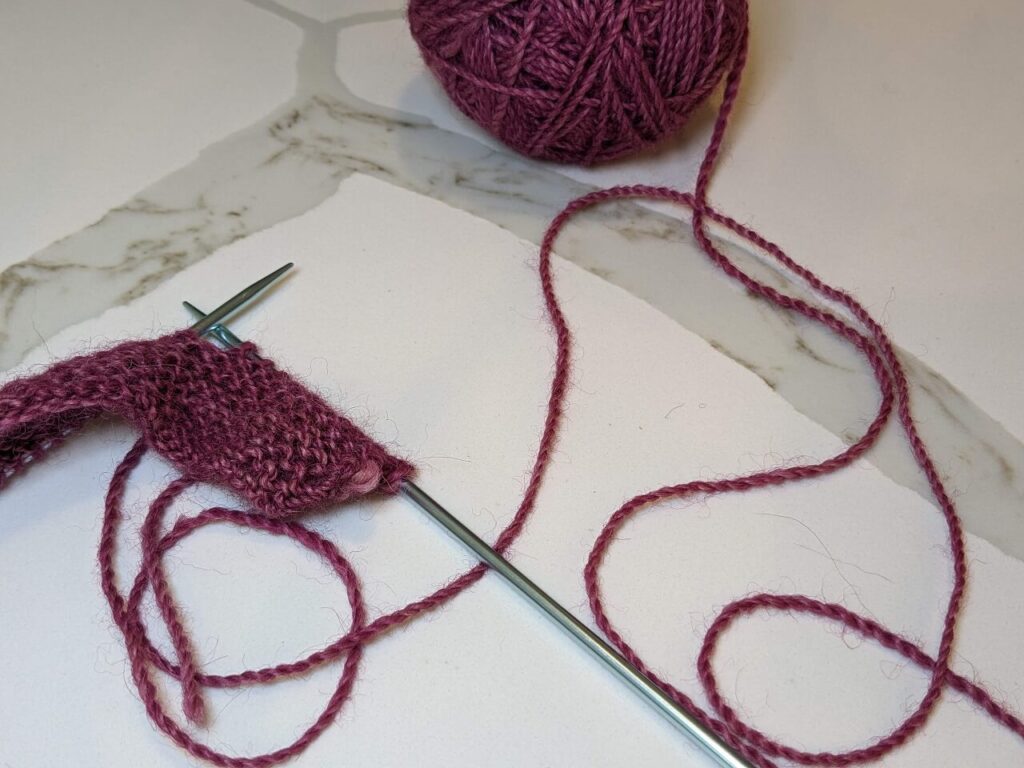
Creating this slack might feel a bit out of control initially, especially if you’re used to pulling your yarn tight. But remember, the goal here is not to have a loose and sloppy stitch but a stitch with just the right amount of space to glide smoothly along your needle.
Regular Breaks and Hand Exercises

Knitting can become a strenuous activity when done for extended periods – especially if you’re a tight knitter. Therefore, regular breaks and hand exercises are crucial for maintaining healthy hands and wrists and managing your knitting tension.
Several years ago, my doctor diagnosed me with carpal tunnel syndrome, and we knew it was caused by my evenings doing nothing but knitting. Fortunately, I rarely have flare-ups anymore because I’ve learned that I’ve got to take care of my hands.
The Power of Pauses
First, let’s talk about the importance of taking breaks. My doctor instructed me to take a 15-minute break after every hour spent knitting. Best. Advice. Ever.
You exert extra pressure on your hands and wrists as a tight knitter, leading to fatigue, discomfort, and even injury if not managed carefully. Giving your hands a chance to rest can significantly reduce the buildup of tension in your knitting.
Hand Exercises: Your Secret Weapon
Complementing your knitting breaks, hand exercises can help relax and strengthen your hand muscles, improving flexibility and endurance. And happy hands make happy stitches!
Here are some simple exercises you can try:
- Finger Stretches: Extend your hands in front of you and spread your fingers as wide as possible. Hold the position for a few seconds, then relax. Repeat this a few times.
- Wrist Rolls: Extend your arms in front of you with your palms facing down. Slowly rotate your wrists, first in one direction, then in the other.
- Hand Clench: Open your hands wide, then clench them into fists. Hold for a few seconds, then release. Repeat this a few times.
- Thumb Touches: Touch the tip of your thumb to the end of each finger, making a gentle pinching motion. Do this a few times for each finger.
Remember, these exercises should never cause pain. However, if you feel any discomfort, stop and seek professional advice if needed.
Practice Regularly
Just knit, knit, knit. Make practice swatches. Don’t worry about having a goal to “create” something. Instead, you should only focus on making the best stitches you can. Once you have that down, your knit garments and accessories will be magnificent pieces of art. And the process will be more enjoyable, too.
Every Stitch Counts
As a tight knitter, it’s essential to remember that every stitch doesn’t have to be a battle with your needles and yarn. Instead, you can transform your knitting journey into a more relaxed and joyful experience with some adjustments.
Remember, every knitter is unique, and what works for one may not work for another. It’s all about finding what feels most comfortable for you. So try these tips, and don’t be afraid to experiment with different techniques.
I want to hear from you — did you try any of these tips? What worked best for you?
And as always, happy knitting!

